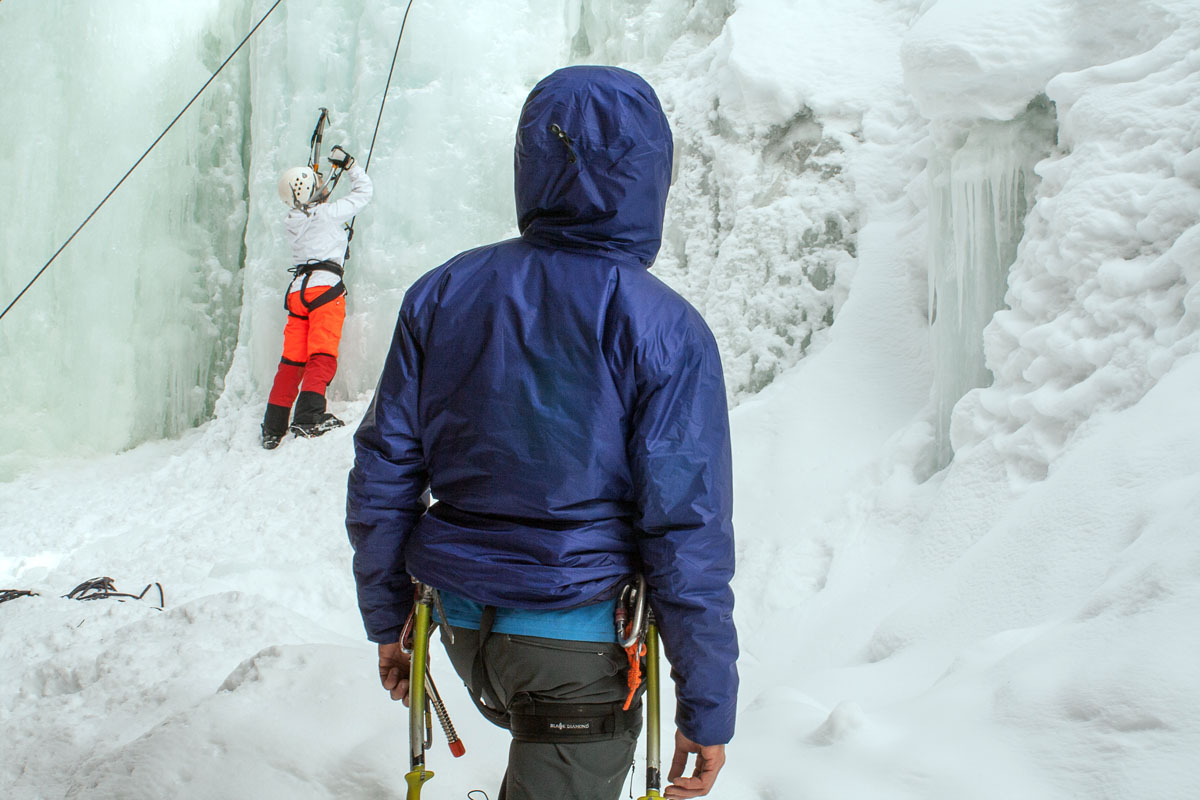
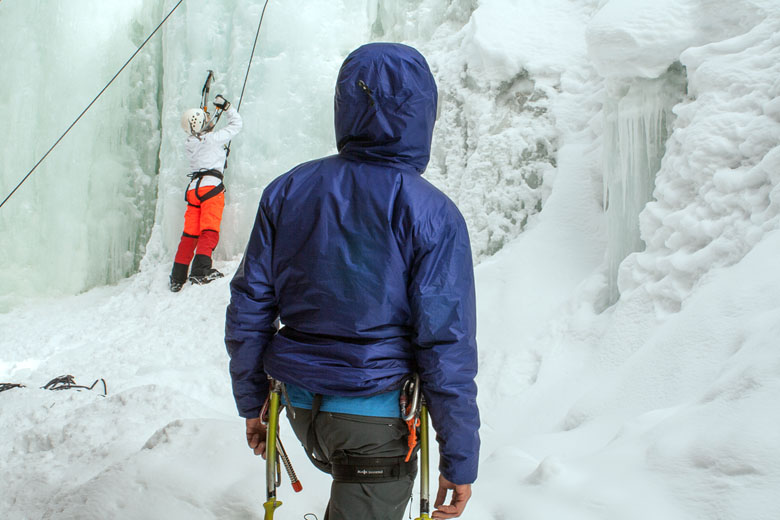
Brett Davis


Brett Davis
Billed as the “next generation” belay parka, the Nuclei AR jacket is well on its way to earning that title. Constructed with a seam-taped Windstopper outer layer that protects Arc’teryx’s proprietary synthetic Coreloft insulation, this jacket is a worthy adversary to the cold, wet, and windy belays for which it was designed. With a snowy and cold Colorado winter as a testing environment, the jacket was put through its paces from belay stances on multi-pitch ice climbs to backcountry powder skiing. In a range of conditions, the Nuclei AR was a strong performer. With a couple of small feature updates, this jacket will earn its billing and become an essential item for any alpine adventure. Below we break down the Nuclei's design, weather protection, packability, fit, and more. To see how the Nuclei stacks up against the competition, see our comparison table and article on the best synthetic jackets.
The Arc'teryx Nuclei AR is designed as a belay parka, which means that it must provide comprehensive warmth and protection from the elements when standing or hanging at a belay. Although relatively simple in design without tons of bells and whistles, the Arc’teryx designers did a nice job of maintaining the intention of the jacket. Starting at the top, the helmet compatible StormHood is effective in keeping the elements at bay. Combined with the extended collar, the hood easily accommodates a climbing helmet or even a larger ski helmet. When snugged up with the small cord locked, which is part of the three-point cinch system, I found the hood to move easily with each turn of my head without restricting my vision. The hood even incorporates a visor into its design, though I found it to be relatively small and not a great deterrent for keeping snow or other moisture from hitting my face.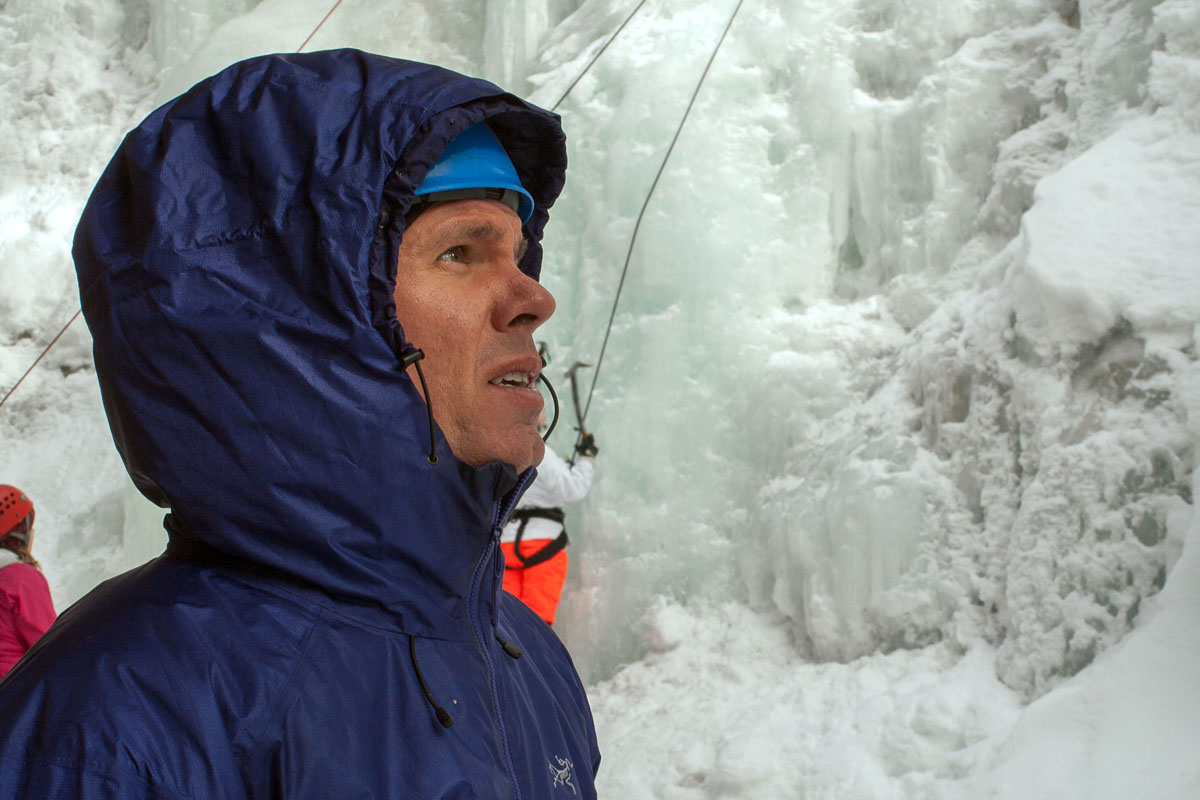
Moving down the jacket, one finds two zippered hand pockets that are located at mid-height just below the chest, as opposed to more conventional placement near the bottom hem. Again, the designers stayed true to the climbing intention of the garment. When worn under a harness, the pockets are still accessible for storing an energy bar or other items. The pocket zippers are waterproof and I found them to be effective in keeping unwanted moisture out. I did, however, find the zipper pull tabs to be a little lacking in substance for manipulating with gloves.
The description of the jacket alludes to it being used under a harness. In my experience as a climber, I hardly ever wear my belay jackets under my harness. Typically, my belay jacket goes on immediately after completing a climb and must have the ability to quickly go over my other layers. The Nuclei AR functions well in this capacity and can be worn over multiple layers without feeling constrained. However, having the ability to be worn under a harness makes the Nuclei eligible for use as an actual climbing shell. For me, the jacket definitely would be too warm for climbing a strenuous pitch. Instead, I wear the jacket over my harness, which makes putting it on and off less cumbersome.
I would make one small feature change that would improve the functionality of the jacket: changing the main zipper to a two-way zip would allow the user to have an easier time managing their belay loop and other gear on the harness. With the current single zipper, the jacket can bunch up around the mid section while resting on a harness belay loop, which impedes vision and hand dexterity while utilizing gear on the harness. The ability to reverse zip from the bottom of the jacket could eliminate this issue while adding minimal weight to the jacket.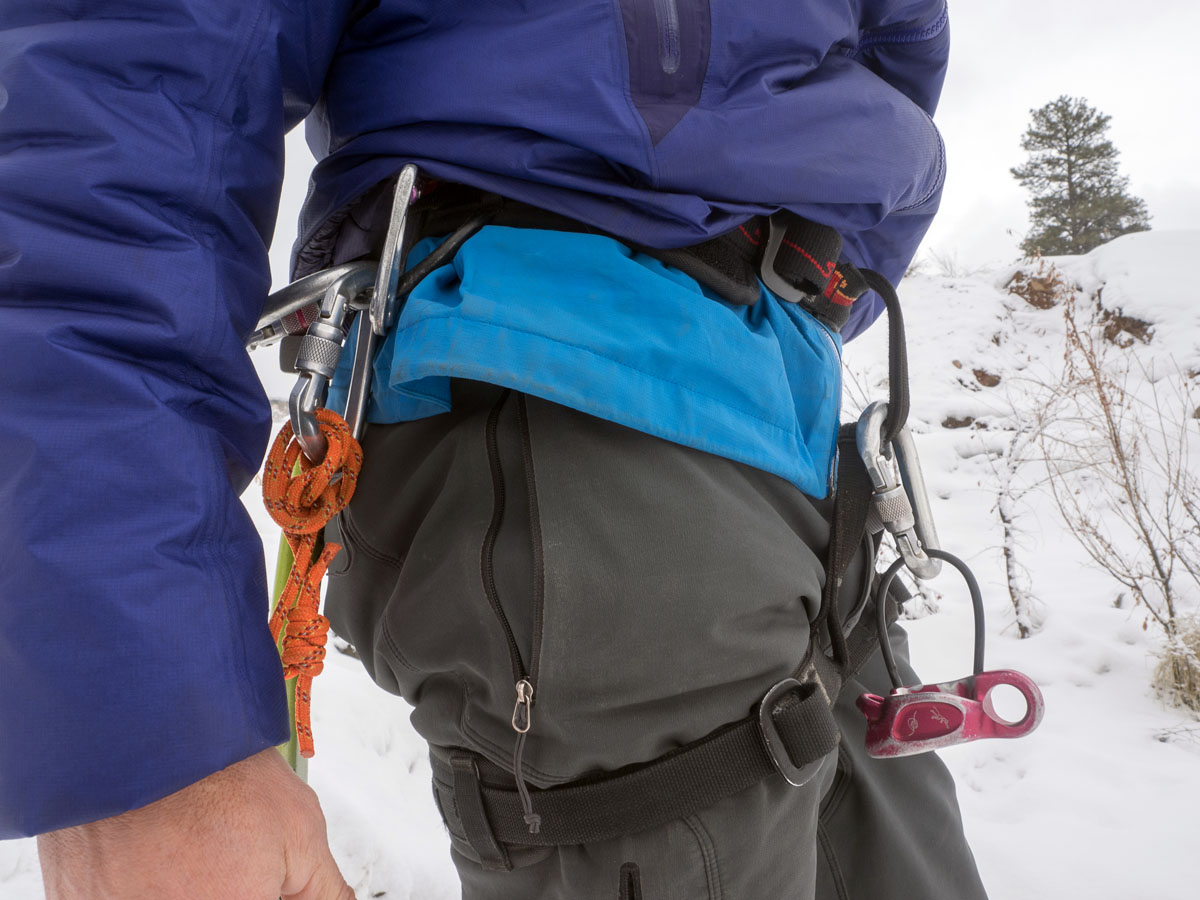
The main zipper of the Nuclei AR is waterproof and low profile, which helps to minimize weight and eliminates the need for storm flaps. As with the pockets, I found the main zipper to be effective in its purpose. Once again, I would increase slightly the size of the zipper tabs for ease of use with gloves.
Lastly, the wrist cuffs are not binding and allow gloves of all sizes to easily slide through them. Though a seemingly small feature it’s important nevertheless—having to remove the warm protection of gloves to put a belay jacket on can be uncomfortable or dangerous in a freezing environment. And although simple, the cuffs are effective at keeping the sleeves from riding up and locking out moisture when arms are raised above the head.
Beginning with the N20mr Windstopper outer fabric, one will find a surprisingly robust and effective protective shell to the Coreloft synthetic insulation underneath it. Having used the Arc'teryx Nuclei AR in wet conditions, I was impressed by its ability to shed water and snow. At one particular belay stance, the ice curtain above me provided a continual drip of moisture that the jacket took without compromising its dryness and my overall comfort. Additionally, I recently returned from a weekend of backcountry storm skiing where the Nuclei AR was used as my transition and descent shell. With over two inches of snow falling per hour, the jacket easily resisted the elements and kept me dry all day. Additionally, the Windstopper outer was durable enough to withstand multiple errant snags on ice tools and other equipment.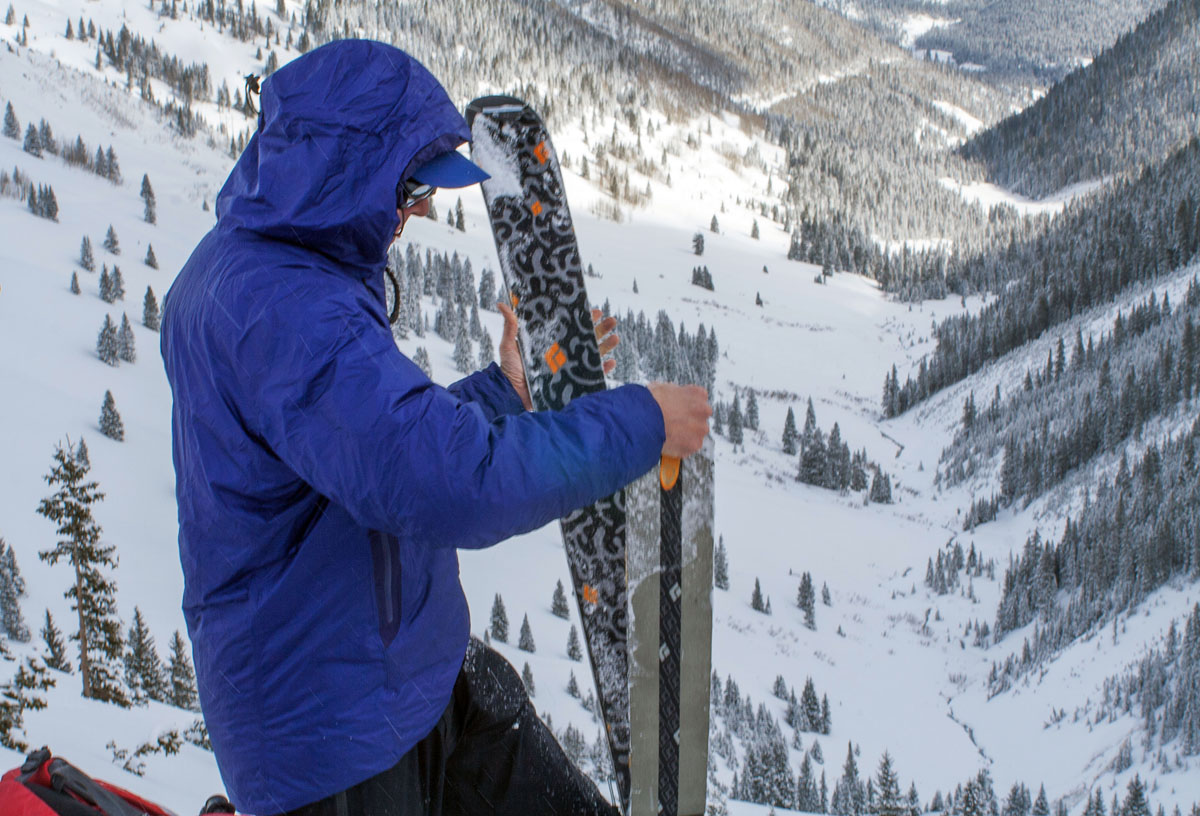
The crimped polyester fibers of the Coreloft synthetic insulation truly are light and do what they are touted to do. With other synthetic jackets, the air permeability is minimal or non-existent, but Coreloft is an anomaly. The insulation acts more like down than a synthetic fiber, easily finding loft once out of its stuff sack. I was surprised every time I compressed the jacket back into my ski pack or its stuff sack with how much air was pushed out of it. And although the outer fabric has been extremely effective at keeping it dry, I am optimistic that if the Coreloft ever becomes saturated with moisture it will still retain its insulating properties.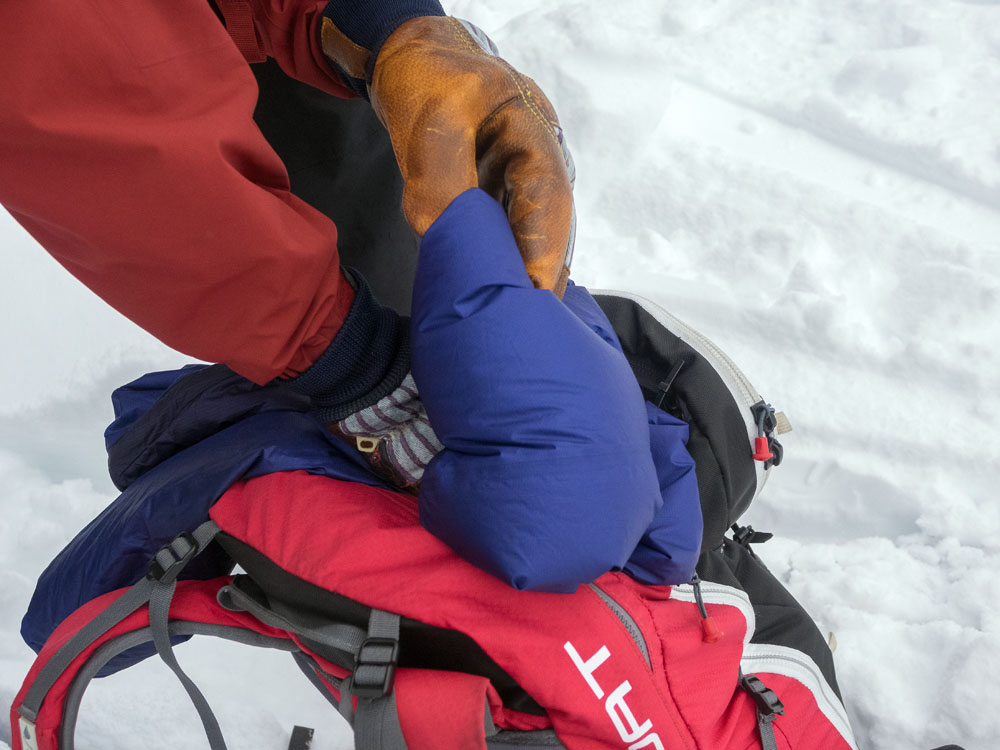
With all of the above, the jacket compresses down into a relatively lightweight and compact package (10 ½” x 5”x 4 ½” for a size large). Though not quite as compressible as a down jacket, the Coreloft is the most compressible synthetic jacket I have ever worn. The jacket comes with its own stuff sack that has a loop for hanging the jacket off of a harness when not in use. Personally, I found dangling the compressed jacket from my harness a bit distracting, and its compressed size is not quite small enough to have found a permanent spot on my harness while leading a pitch of ice. It does, however, fit easily into my pack where it can be extracted at belays or transitioning from skinning uphill to skiing downhill.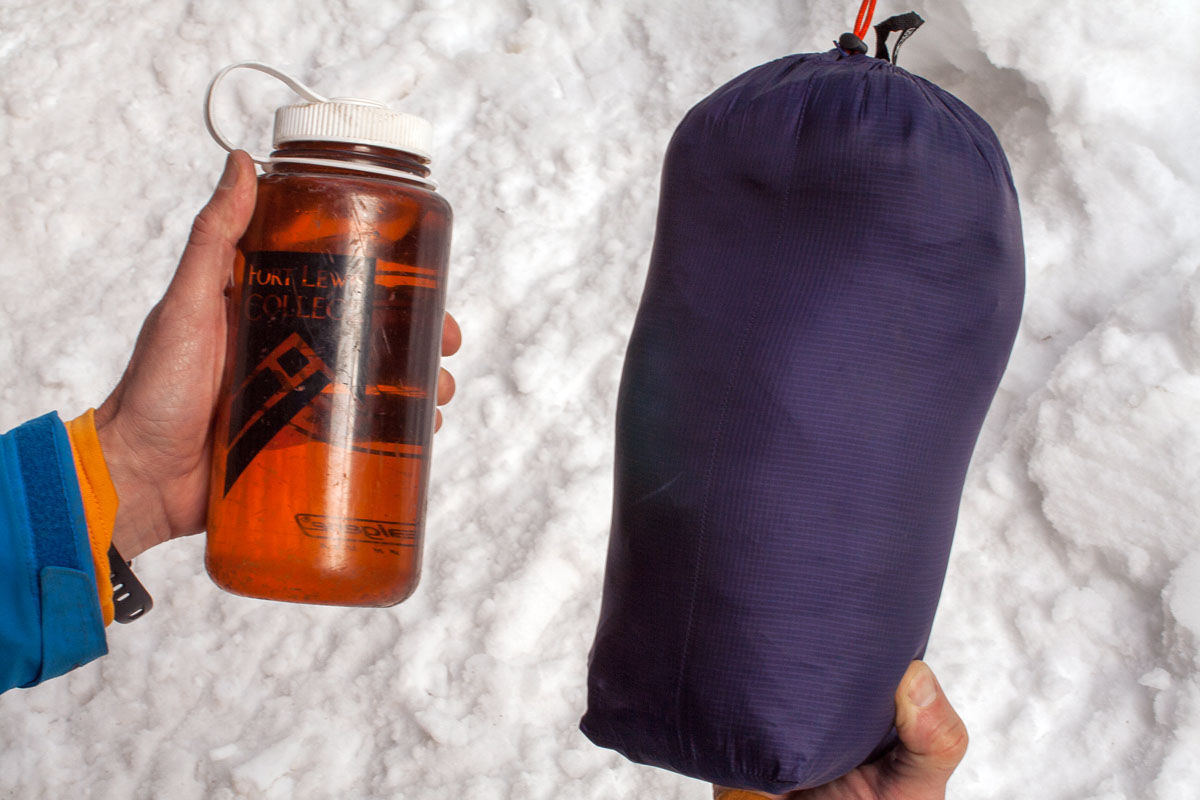
As a slim, athletic, 6’2” male, I found the size large Nuclei AR jacket to be a comfortable and not inhibiting of movement. Having experience with other similarly designed jackets, I always immediately note the girth or lack thereof around the mid section. Once the Nuclei was on and zipped up, the jacket felt trim and form fitting without extra fabric bunching up or impeding movement. This is an important factor when utilizing a jacket designed for technical use. The last thing I want in a belay parka is extra fabric catching on ice tools, quick draws or ice screws, or one that blocks my vision from my belay loop or the equipment dangling off of my harness. Additionally, the well-thought out gussets under the arms allow for full movement of the arms above the head with the freedom to get a task completed, whether it be belaying or clipping an anchor.
The jacket is cut a little longer in the back (hip length) for increased protection of the backside, which is a nice touch. When experiencing lengthy belays, small nuances such as this can make a surprisingly big difference in warmth. Additionally, although form fitting, the Nuclei AR can easily be worn over layers without feeling constrained. The purpose of a “belay parka” is to be able to be used as an outer layer that can be put on over multiple layers to conserve the heat generated from the exertion on a climb. The Nuclei AR effectively serves its purpose without any complaints.
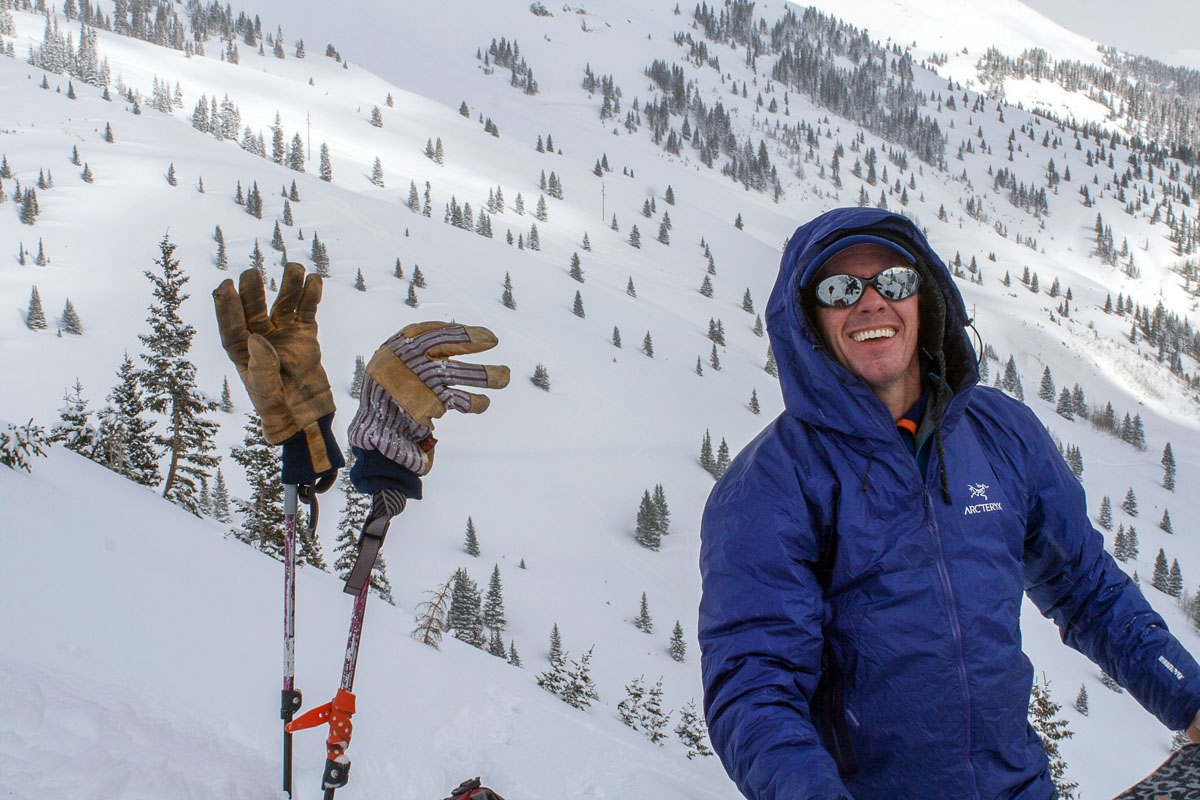
| Jacket | Price | Weight | Insulation | Fabric | Packable |
|---|---|---|---|---|---|
| Arc’teryx Nuclei AR | $425 | 16.2 oz. | Coreloft (100g and 60g) | 20-denier | Yes |
| Patagonia DAS Parka | $299 | 23.6 oz. | PrimaLoft (120g and 60g) | 20-denier | Yes |
| Black Diamond Stance Belay | $299 | 25.8 oz. | PrimaLoft Silver (2 layers 80g) | 40-denier | No |
| Arc’teryx Atom AR Hoody | $299 | 16.6 oz. | Coreloft (120g and 80g) | 30-denier | No |
| Patagonia Nano-Air Hoody | $299 | 13.6 oz. | FullRange (60g) | 20-denier | No |
One of the primary competitors to the Nuclei AR is the popular Patagonia DAS Parka. The DAS has more insulation with 120-gram synthetic throughout the jacket and an additional layer of 60-gram synthetic around the core (the Nuclei uses primarily 100-gram Coreloft). Both jackets tout a wind and water-resistant shell, although the Nuclei takes it a step further with complete seam taping. Both are great options, but we consider the Nuclei to be the better all-around belay jacket. While the DAS Parka is warmer and has a two-way zipper, we prefer the Nuclei AR’s medium-weight insulation for layering in the cold without overheating, 7-ounce weight savings, and much smaller packed size.
The Nuclei AR jacket is yet another high quality cold-weather jacket from Arc’teryx. It's a nice step up in weather resistance from their Atom AR, and I have complete confidence that it will keep adventurers dry, warm, and satisfied in the winter environments. With a few minor improvements such a two-way zipper, the jacket will become a must have for ice climbers, backcountry skiers, and alpinists. I know that the Nuclei AR will be in my pack whenever heading to an icefall or the backcountry in search of powder.
If you’re thinking about buying gear that we’ve reviewed on Switchback Travel, you can help support us in the process. Just click on any of the seller links above, and if you make a purchase, we receive a small percentage of the transaction. The cost of the product is the same to you but this helps us continue to test and write about outdoor gear. Thanks and we appreciate your support!
Depending on the seller, most products ship free in the United States on orders of $50 or more. International shipping availability and rates vary by seller. The pricing information on this page is updated hourly but we are not responsible for inaccuracies.